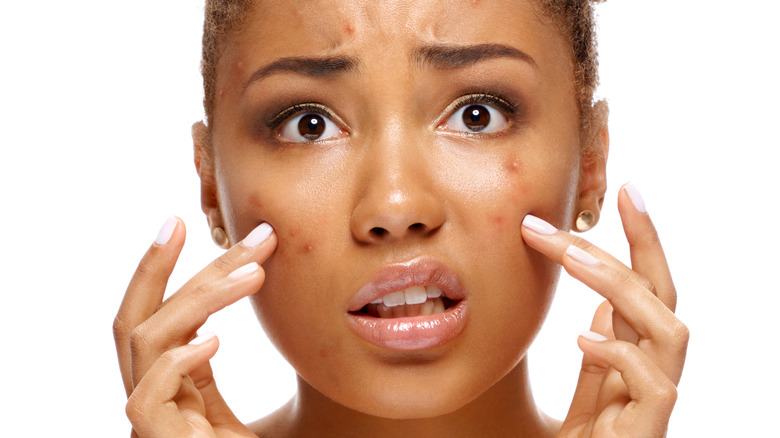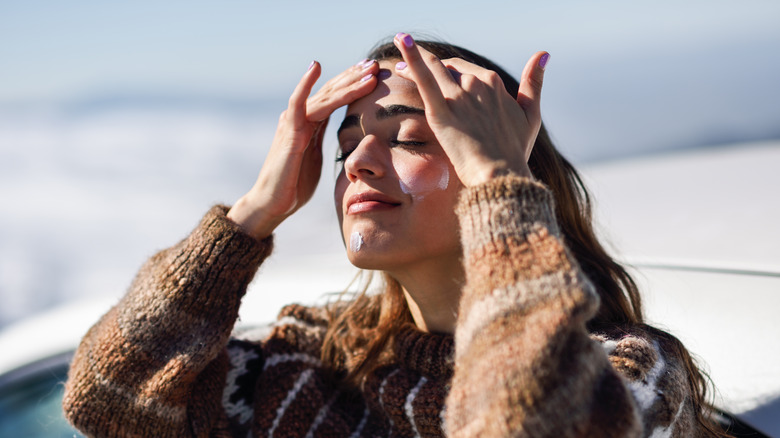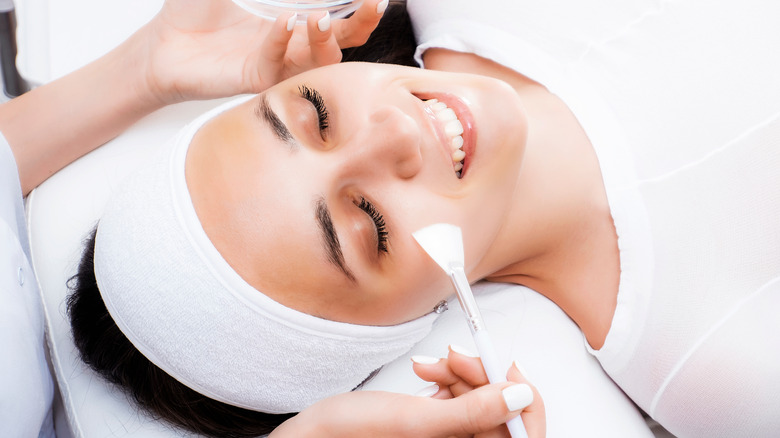How To Prevent And Treat Post-Inflammatory Hyperpigmentation
Not everyone is blessed with the perfect skin type. Some people have skin that's more susceptible to sunburns. Others have skin that offers natural sun protection but is more prone to acne and other dermal conditions. And many adults and teens have to deal with those pesky concerns like oiliness, dryness, and combination skin.
Complexion plays a significant role in many of these problems. A 2006 study by the Missouri School of Journalism found that tan skin is more appealing to people than lighter or darker tones. The mere existence of tanning beds confirms this, but while being bronze may be desirable to some, this comes with some disadvantages.
One of the most common skin conditions among individuals with medium to dark skin is post-inflammatory hyperpigmentation (PIH), according to Medical News Today, but it can affect those with lighter complexions as well. This issue is characterized by certain spots on the skin having more color than other areas as a direct result of inflammation. The good news is, it is both preventable and treatable.
Post-inflammatory hyperpigmentation causes and prevention
Parts of the skin can be inflamed for a number of reasons, including pimples, mosquito bites, fire ant bites, and poison ivy, as WebMD explains. These conditions damage the skin, which prompts the cells to respond by producing melanin, a natural pigment in the body. Unfortunately, this results in spots that are noticeably darker than the rest of the skin.
If acne is the cause of PIH, the obvious way to prevent it is to try to prevent acne. The American Academy of Dermatology Association recommends washing your face once or twice a day using a gentle facial cleanser, and try not to touch your face in the interim. If you already have acne, dodge the sun and tanning beds, since this can exacerbate acne.
You can also steer clear of heavily wooded areas where the risk of bug bites and poison ivy are greater, but regardless of your efforts, sometimes PIH is unavoidable. You can prevent it from getting worse, though, by using sunblock with an SPF of 30 or above and by not picking at areas of the skin that are already inflamed.
How to treat post-inflammatory hyperpigmentation
According to WebMD, PIH dark spots that form on the top layer of skin can take up to a year to fade, and spots that penetrate the second skin layer can stick around for years. But treatment options are available that can speed up the fading process or reduce the appearance of PIH spots.
Topical creams that contain hydroquinone are commonly used as a treatment option. Hydroquinone is a compound that lightens skin by decreasing the number of cells that produce melanin, as Healthline explains. These creams used to be available over the counter, but prescription hydroquinone topicals are now the standard, according to GoodRX.
Products with retinoids are also effective in treating PIH due to their ability to increase cell turnover, per WebMD. Dr. Michelle Henry, a board-certified dermatologist, added that retinoic acid is another important ingredient to consider in retinol products. "Higher concentrations of retinoic acid have stronger effects on the skin," she told Camille Styles.
MedicalNewsToday lists green tea extracts, laser therapy, acid peels, and other cosmetic procedures as alternative treatment options for PIH. If you're unable to avoid circumstances that lead to inflammation, these cosmetic treatments and home remedies, in addition to skin creams with retinoids or hydroquinone, can lighten dark spots or help them fade faster.


